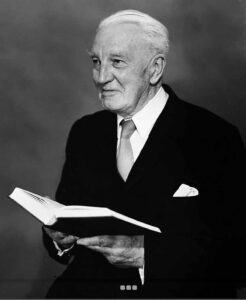
- Two men remained up until twelve o’clock on Little Christmas Night, and went to a well to watch the water turn into wine and they were never seen or heard of again. They took a gallon with them to bring a gallon of wine home, and they were to have a great night. On that night it is not right to leave the house without water. A few buckets are filled with water and the water left uncovered. (Killorglin, Co Kerry)
- The 6th of January the feast of the Epiphany is known locally as Little Christmas day or the Women’s Christmas. There is feasting and merrymaking on that day. It is thought if a person remained up till midnight on that night he would see water turned into wine. It is believed it occurs in memory of the time Our Lord changed water into wine at the wedding feast of Cana at the request of His Blessed Mother. Probably that is why it is known here as the Women’s Christmas. (Crookhaven, Co Cork)
- On little Christmas night a little feast is held in every house and big candles are lighted. (Teevenacroaghy, Co. Mayo)
- Sé an Nodlag a théighead na mná go léir go dtí an baile mór mar bé sin an lá geibheadh siad an féirín ar a ghlaodhtar “Christmas Box”. Geibhidís an feirín sin ins an tig in a ceannuighidis na nidhthe ar feadh bna blíadhna. (Dubhghlas, Co Ciarrai)
- The 6th January is here called “Little Christmas” or “Twelfth Day”. Large candles are lit on that night and the night before. Most people celebrate it by having dinner as on Christmas Day. (Grangegeeth Co Meath)
- Twelfth Night is sometimes called Little Christmas Night. It is the night before Twelfth Day or January 6th. On that night parties are given, and everyone is invited. The people eat plenty, and dance all night. In olden times and in many houses still twelve candles are made from rushes. Large rushes are pulled and peeled except for one strip, that is left to support the pith. Then the peeled rush is dipped in grease and left to dry until evening. In the evening a piece of timber is got, and some dried manure is put on it in a large cake. Then the rush candles are put standing up in the cake. Each candle is named after an Apostle, and each person in the house names a candle for himself. The Rosary is then said, each one watching his own candle. The owner of the candle to burn out first, will be the first to die out of the house. The candles are allowed to burn down and the manure which held the rushes is put up in the rafters of the cow-house for luck. (Clonmacnoise, Co. Offaly)
- On the Eve of the Epiphany, “Little Christmas”, there are twelve small candles lighted in honour of the Coming of the Gentiles. (Esker, Athenry, Co Galway)
- Long ago twelfth night was called Little Christmas. All the things that were left after big Christmas was kept for this feast. On Christmas night long ago each person in the house had his own print of butter and six or seven big sixpenny loaves were bought. The loaves were four times the size they are now. They were so big that sometimes the children used to put a board across them and make a stool of them. There were also twopenny loaves that time. The people always kept some of the plum pudding for Little Christmas and they finished it on that night. The holly and ivy are taken down the next day after Little Christmas and burned:“Eat when you’re hungry/ Drink when you’re dry/Go to bed when you’re sleepy/ And go to heaven when you die. ” You are to eat what is put before you on that night. (Castlejordan Co Meath)
- This feast day which is called by the church the feast of the Ephipany is always called little Christmas Day. It occurs the 12th day after Christmas and marriages never take place till after it. It falls on the 6th January. School children have to return again the holidays are over Candles are again lighted on the Eve of and on the nights of the feast. It is a really nice sight in the country side to see every house lighted up in fact every window has a light The houses lighted up on the side of the hills and mountains look beautiful and show a grand spirit of faith as the candle is the emblem of faith. Some people light three candles in the kitchen to hoot honour the Magi (Kilkishen Co Clare)
- Twelve rushes were obtained and steeped in grease. Cow dung was then obtained and flattened out on a board. The twelve candles were then stuck in the cow dung and lighted. This was done about 10pm. All knelt and said the rosary. The cake was preserved and put under the cows’ heads in the manger on the morning of 1st May. It was supposed to ward off disease among the cows. The candles are still used but are the ordinary coloured candles. They are placed on a board and after being lighted – the rosary is said. The ceremony on 1st May however is discontinued .
The material boiled in new milk was considered a cure for kidney trouble. (Cornalee Co Roscommon) - The Eve of the Epiphany is called “The Twelfth Day” in this district. It is an old custom to light twelve candles in honour of the twelve Apostles. A cake is made of cow manure and ashes, the candles are put standing on the cake. These candles are named after the members of the house and their nearest relations. Then they are lighted and left burn out. It is believed that those whose candles are burnt first will die first. Long ago the twelve candles were made from rushes. The rushes were peeled and then dipped in grease. Nowadays small 1/2d candles are used instead. (Abbeycarron Co Roscommon)
- It is a rule throughout the country that on the “Twelfth Night” that is, Jan. 6th the people of each house gather rushes and put them near the fire to dry. When they are dry, they are peeled and dipped in grease. Then a cake of clay is got and each candle is cut the same length and they are stuck in the cake of clay and before the people go to bed they light them and each one names a candle or himself, and the people say the rosary before them and whichever candle dies the first the one who has it named is sure to die first. When that night is over the cake is left in one of outhouses. It is said that there is a great cure in it. This is done in honour of the twelve Apostles. (Gallagh Co Galway)
- On the eve of the Epiphany every family light twelve candles in honour of the twelve apostles. These they place on some article in front of them while saying the rosary. Each one names himself on the candles. The person whose candle die first shall die first. The candles used are rush candles. Those they peel and dip (them) in butter or greese. Those are then good for lighting and last longer. (Pollremon, Co Galway)



